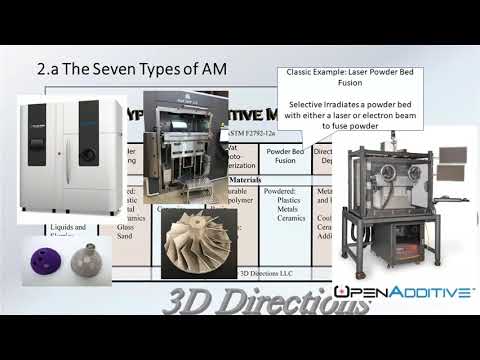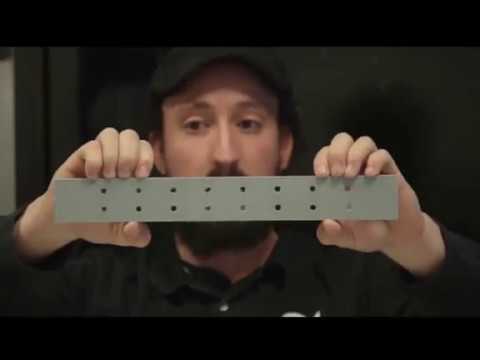Additive Manufacturing Begins to Mature Beyond Desktop 3D Printing
3D printing has moved from the hobbyist to a manufacturer’s part-design teams. How is it making an impact?
3D printing has moved from the hobbyist to a manufacturer’s part-design teams. How is it making an impact?

3D printing is growing up. Is it as revolutionary as its promise or just another valuable tool in the work toolbox—or both? We speak with MakerBot and a 3D-printing consultant in the Rust Belt to see where things are and where they are heading.
3D printing has not reached its full potential in professional and manufacturing-centric environments, but there’s a lot of healthy room to grow there, say additive manufacturing engineers, consultants and academics. And new technologies and machines are cropping up that are taking advantage of innovations in metal powders. One of the biggest questions about the technology is whether it can move from being a favorite of parts design and prototyping to a mainstay on the shop floor. Will it hit its stride at higher production levels? And what are the barriers to making bigger waves?
Industry insiders say shops of all sizes are using these 3D processes in a variety of ingenious ways—from custom workholding and molds to functional end use parts featuring geometry that is only possible with additive manufacturing.
“CNC shops have been using things like MakerBot to 3D-print complex structures that can hold the device in the mill at the angle needed to be able to machine the part,” says Chris Barrett, president of 3DDirections. “So shops are making jigs, fixtures and some tooling that way.”
Barrett is a chemist and physicist by trade but was bored with test tubes—and found his way to material science and engineering. Because he’s based in Ohio, Barrett was exposed to traditional manufacturing and the world of emerging additive and 3D-printing technologies. He started his consultancy with a strong understanding of both worlds and focuses on helping companies take advantage of the technology where it makes the most sense.
Note: Barrett, as a trainer for Tooling U-SME, hosted a webinar on June 27 about additive manufacturing on Better MRO, where he outlined seven major categories of 3D printing and discussed the pros and cons of each type. The replay is available in the video link above. Subjects included:
Vat photopolymerization
Contains stereolithography (SLA) and digital light processing (DLP)
Powder bed fusion (PBF)
Contains SLS, direct metal laser sintering (DMLS), SLM, electron beam melting (EBM)
Binder jet printing (BJP)
Material jet printing (MJP)
Sheet lamination (LOM)
Material extrusion
Contains fused deposition modeling (FDM)
Directed energy deposition (DED)
“There are a number of key ways that manufacturers and job shops are using professional 3D printers today,” says Dave Veisz, vice president of engineering at MakerBot. “Companies are using them for workplace organization—for parts that help a shop implement 5S lean manufacturing, assembly and measurement fixtures, parts grippers, gauges, and where high strength plastics are adequate… You’re not going to use it for uniquely demanding high-force or high-temperature applications like oven fixtures, but for many fixture and tool applications, it works well.”
A crucial advantage of 3D printing: Geometric complexity is “free,” says Veisz. For example, say you are designing a gripper to pick and place a casting and it has a complex shape. You can generate the inverse of the casting geometry in CAD, modify it for the application and print a perfect match. Since the 3D printing cost and time is driven primarily by part volume, there is no additional cost for difficult to achieve geometries through traditional manufacturing processes.”
Additive manufacturing using metal powder or high-temperature thermoplastics is predominantly used in the aerospace and defense sector—and with good reason: These companies can afford to invest research and development dollars toward smaller, sometimes complex, parts that have the potential to lower costs or speed up delivery time. Parts include: complex ducting for environmental control systems, wind tunnel and unmanned aerial vehicle components, tanks for fuel and other liquids, surrogate parts, and composite layups.
“Most of the major aerospace and defense OEMs, including Boeing, Lockheed, GE, Northrop Grumman, the ones that have large revenue bases, they’re all in it,” says Barrett. “And the other companies that are starting to use it are biomedical firms making titanium hip implants today. But the thing you run into is the cost.”
The OEMs want to be able to bid the work out and outsource to smaller manufacturers. The challenge is that the standards have not caught up with metal printed parts just yet. The FAA standards for aerospace parts, especially for large-passenger aircraft, can be rightfully stringent. A lot of research is needed to understand what are acceptable minor anomalies— and what are not.
Right now, a smaller job shop might be able to print a metal part for an OEM, but it can only use, for example, one kind of metal powder in its machine per the standard on one approved machine—and so the limitations are costly, says Barrett. Job shops need flexibility to make a profit.
See how one aerospace and defense manufacturer found a niche in 3D additive work. Read “How to Take a 3D Printed Part to Market in Aerospace.”
“The good news is that in the next five to 10 years, the standards will begin to make an impact,” says Barrett. “Currently, NIST (National Institute of Standards and Technology) is doing a lot of research here.”
But it’s not limited to aerospace or implants. Other medical instruments are being made, such as handheld devices, medical carts and surgical guides and tools, as well as parts for the energy, transportation and consumer products categories. In oil and gas, parts are being churned out for rotors and stators. In automotive, companies are making paneling, custom interiors and grilles. And for consumers, think form and fit: frames for glasses and pre-production designs.
One of the companies that gained a lot of traction and attention during the first consumer adoption of 3D printing was MakerBot. The company, which was purchased by Stratasys in 2013, has spent the last several years focused on research and development beyond the hobbyist and educator markets. Stratasys has been making 3D parts for Airbus since 2015.
Last December, MakerBot launched a more advanced 3D-printing machine aimed at the professional market dubbed Method, which costs about a third of an entry-level industrial 3D printer. MakerBot collaborated with Stratasys in developing the technology used in the new machine. Method is the first new hardware platform in about three years for MakerBot.
“It’s really the first platform that we’ve developed from the ground up as an affiliate of Stratasys,” says Veisz. “It’s a combination of Stratasys intellectual property and vast knowledge and MakerBot’s design and engineering DNA … , We wouldn’t have been able to pull this machine off successfully without both pieces.”
Method’s feature set is totally different, and it’s more robust than the desktop 3D-printing machines out there, it claims. That feature set includes dual extrusion of solid model material and soluble PVA—which is water-soluble plastic—and a metal CNC machined frame, dry seal material bays and a circulating heated chamber that creates a warm cushion of air essential for creating a controlled environment. Every layer being added sees the same environment.

“This is something you see on industrial 3D printers that start in the tens of thousands of dollars and you don’t see this in the desktop world,” says Veisz. Desktop 3D printers utilize a hobbyist architecture that doesn’t provide repeatable dimensional accuracy, making them inadequate for many manufacturing applications with tight tolerances.
Since the printing environment on desktop 3D printers is not as controlled as on industrial 3D printers, the accuracy and the machine uptime also suffer. In most desktop 3D printers, as you move up in the Z direction, the part is exposed to a cooler environment, which makes the layer weaken and the part warps differently.
With Method, MakerBot claims to give tolerances for the finished part at plus-minus .2 millimeters for the first 100 millimeters in the X, Y and Z axes—and then it scales up at that same proportion, .002 millimeters per millimeter for any dimensions that are over 100 millimeters.
“So it’s not quite precision CNC machining tolerances, but it’s certainly close enough for most jig, fixture, tool and prototype work,” says Veisz. “And it’s inline with production plastic injection molding tolerances. You do not see claims of dimensional accuracy in most desktop 3D printing, and MakerBot has not made claims on finished part accuracy on previous machines …You don’t really see claims of dimensional accuracy for parts [in most desktop 3D printing] … It’s notable that this is the first printer that we’ve launched that can really print any geometry because of the soluble support, and can print it to a consistent part accuracy because of the machine features and controls.”
Do you need different skills to work with 3D printing and metal additive manufacturing? No and yes. “Today’s machinists have the skills that they need to be able to troubleshoot a machine, to clean it out, to maintain it—and they are already trained and know how to make sure something is being made according to spec,” says Barrett.
The difference is understanding how to support the parts being printed to achieve the end result—and to learn what exactly needs to be adjusted when problems inevitably arrive.
“Additive is unique because you often have supporting features. And so the engineer from the get-go needs to be talking to the machinist to cut all the supports back off. … You have to design your file, knowing the end use and knowing how to troubleshoot all the issues.”
In metal additive manufacturing, if you’re using the laser systems, such as laser powder bed fusion common in aerospace, you’re essentially welding.
“It’s laser welding, which we’ve done for a while, but now it’s just controlled by a machine,” says Barrett. “The problem is, you have to weld it to a base plate. And you don’t want to weld your part directly to the base plate, because you need to cut it off the plate.”
You have to raise the part up a bit—so it’s somewhat free-floating. The base plate serves to structurally and thermally support your material, so it doesn’t warp from the heat. It also serves as a conduit to get the heat out of the part at the correct speed so that you have good mechanical properties, Barrett explains.
As a trainer and lecturer for Tooling U-SME, Chris Barrett, a 3D-printing consultant, hosted a webinar on additive manufacturing on June 27, 2019, on Better MRO.
Learn all about the wide variety of 3D-printing categories and standards—and learn more about metal additive manufacturing.
Click here for a replay.




